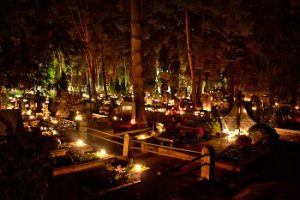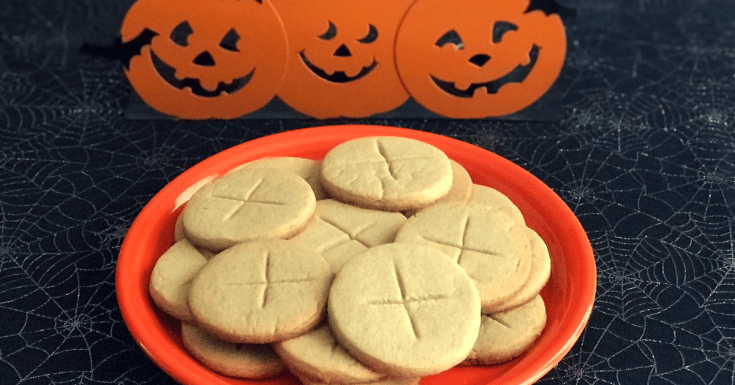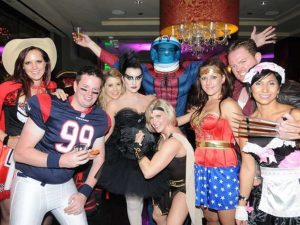
Halloween Traditions

Ancient Origins, Trick Or Treats & More
The celebration of Halloween each October 31 traces its origins to ancient traditions that date back more than two millennia. A spiritual festival became the vibrant holiday we now celebrate with costumes, candy and community activities. Studying the development of Halloween sheds light on its transformation from ancient traditions into one of America’s most beloved celebrations.
Ancient Origins: Samhain & the Celts
The origins of Halloween date back to the ancient Celtic celebration of Samhain (pronounced “sow-in”) which signaled the close of the harvest season and the beginning of winter—a period traditionally associated with deathz. In Ireland, the UK, and northern France the Celts maintained that October 31 was when the boundary between the living and the dead became thin enough to let spirits back onto earth.
During Samhain the Celts protected themselves by creating sacred bonfires and dressing in animal skins while offering tributes to their gods. The Celts thought that spirits served as guides for Druid priests when they made winter predictions. Following their celebration people used fire from the sacred bonfire to rekindle their hearths for seasonal protection.

Roman Influence & All Saints’ Day
The Roman Empire had succeeded in taking control of most Celtic lands by 43 A.D. The Roman celebrations Feralia for honoring the dead and the festival to honor Pomona, the goddess of fruit and trees merged with Samhain over time. The apple symbol associated with Pomona probably served as the basis for the Halloween tradition of bobbing for apples.
During the 7th and 8th centuries the Catholic Church sought to replace pagan festivals with officially recognized church holidays. All Saints’ Day or All Hallows’ Day became November 1 because Pope Gregory III established it on that date. People began calling the day before All Saints’ Day All Hallows’ Eve before it was shortened to Halloween. During the 11th century the observance of All Souls’ Day on November 2 strengthened Halloween’s link to honoring deceased loved ones.

Halloween Comes to America
Halloween celebrations seldom happened in colonial New England because Protestant beliefs strictly prohibited them. Maryland and the southern colonies became hotbeds for the establishment of Halloween traditions. Halloween expanded throughout the United States as European immigrants settled there during their escape from events like the Potato Famine.
Americans held harvest celebrations during the mid-1800s which included ghost story sessions as well as singing and dancing along with games. Early celebrations established the structure of contemporary Halloween celebrations.
Trick-or-Treating and Soul Cakes
The custom of trick-or-treating originated from a mix of traditional practices found throughout Europe. During All Souls’ Day in medieval England poor individuals practiced “a-souling” by going from door to door to collect soul cakes which they exchanged for prayers dedicated to the deceased. The custom gradually shifted to children who would get food, coins or ale.
American children started dressing up and collecting treats by going door to door at the start of the 20th century. Trick-or-treating became a common practice during the 1950s which provided an affordable and enjoyable method for communities to have celebrations together.

Halloween Parties and Pop Culture
Halloween became a secular holiday celebrated by entire communities as its popularity increased. Throughout the 1920s and 1930s towns organized parades and hosted Halloween parties. The 1950s witnessed initiatives to shift attention away from vandalism by making Halloween a holiday focused on children and family-oriented activities. The baby boom after the war resulted in more celebrations happening inside classrooms and homes.

Americans currently spend over $6 billion every year on Halloween which secures its position as the second-largest commercial holiday behind Christmas. The massive popularity of Halloween stems from decorations, candy, costumes and haunted attractions.
Halloween in Film and Media
The film industry in Hollywood has significantly contributed to Halloween’s widespread cultural reach. The 1978 John Carpenter movie “Halloween” presented audiences with Michael Myers which led to the creation of other slasher films such as “Friday the 13th” and “A Nightmare on Elm Street.”

Costumes and Ghostly Beliefs
The practice of wearing costumes originated from Celtic traditions combined with European customs. As people thought spirits wandered around on Halloween night they disguised themselves with masks to prevent recognition. Bowl offerings of food outside served as an appeasement ritual to prevent spirits from entering homes. Halloween costumes have grown to encompass a wide range of characters including superheroes and movie villains which keeps the holiday exciting and imaginative for everyone.

The annual celebration of Halloween maintains its status as a dynamic holiday while expanding in popularity throughout different countries. Ancient Celtic rituals established the foundation for Halloween which evolved through cultural changes into a lively combination of spooky legends and festive community activities. Dealing out treats to costumed children or creating jack-o’-lanterns makes you an active participant in a holiday that carries deep historical significance and meaning. The Halloween festivities which range from traditional bonfires and soul cakes to modern haunted houses and horror films create a link between historical roots and contemporary enjoyment. The thrill of Halloween brings together people from all generations who honor traditional celebrations while forming new memories through frightening experiences and sweet snacks.



